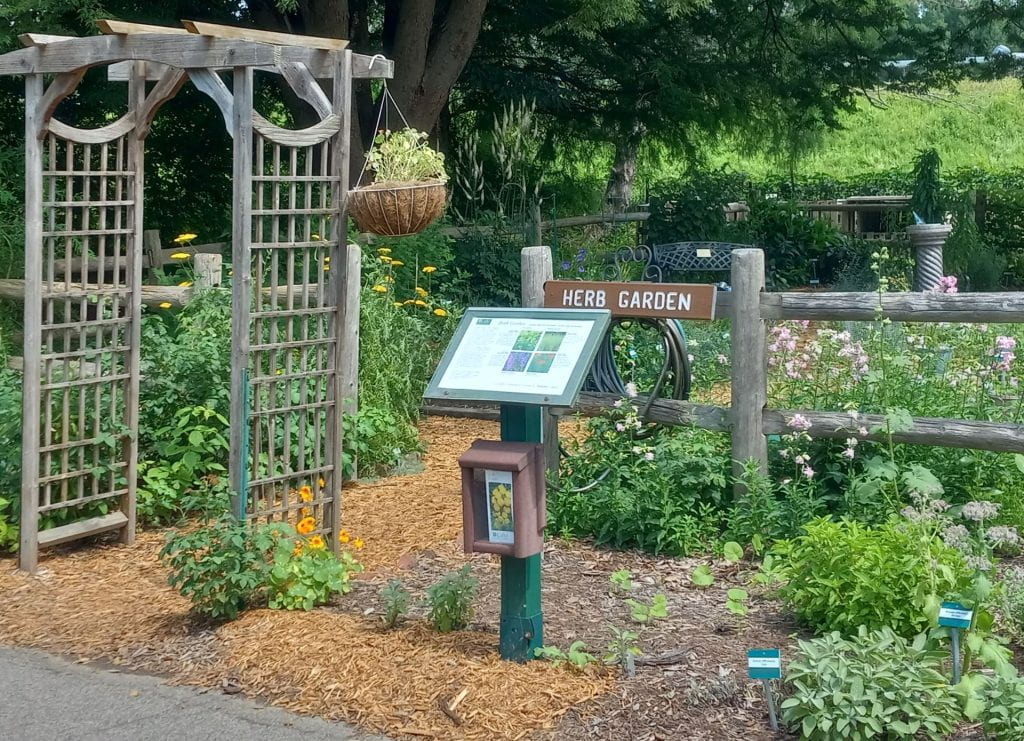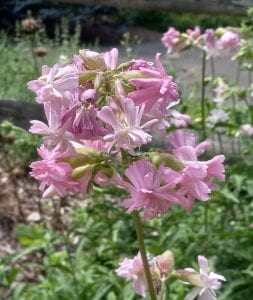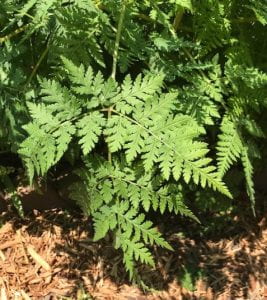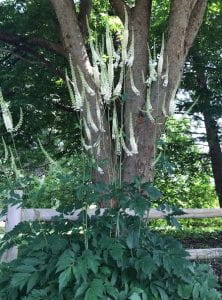
Consider this an invitation to try growing herbs at home. Anyone who can find an available corner of the yard (especially close to the kitchen), front stoop, or windowsill has enough space to provide fresh basil and oregano for pizza sauce. Or perhaps your favorite ingredients for home brewed herbal tea. Within a larger garden aromatic herbs near beds of flowers or vegetables can help deter rabbits (a little bit anyway) and attract beneficial insects. Fresh culinary herbs are less expensive and more convenient when you tend the plants yourself. Many culinary herbs grow well in containers. There are so many design ideas for growing herbs: formal, cottage, or even vertical. The garden should grow what you like to use the most.

The Oxford Dictionary defines ‘herb’ as any plant with some part used for flavoring, food, medicine, or perfume. Cornell University’s website includes plants that have human use or significance. Think of the botanical discoveries made over time: chamomile and lemon balm make nice teas if you are restless at the end of the day, foxglove was used to make heart medicine, dill tastes great with potatoes. Careful observers identified these plants, and good gardeners tended them. 5000 year old clay tablets from the Sumerians have been found containing lists of plants used in remedies, including the fennel, mint, thyme and sage. Nicholas Culpeper published The English Physician in 1653, an encyclopedia of herbs and their usages that is still in print today.
At Cutler Botanic Garden, the Herb Garden is a cozy, fenced in square that offers visitors a shaded bench amongst the lush display of herbs. Nestled within the brick lined space are raised beds filled with nearly one hundred different species, a mix of common essential elements for the contemporary herb garden and plants no longer in favor, but of merit for their attractiveness to us and pollinators. Some of the less familiar herbs are actually used in traditional medicine both around the world and by indigenous peoples in North America.

Greeting you just inside the gate stands Saponaria officianalis, soapwort. As ‘wort’ is an old English word simply meaning plant, you can guess the traditional use here. The saponins found in this plant create a foam when shaken in water. The solution was used in Europe for bathing and washing delicate clothes. Soapwort can spread by rhizomes and fill your garden with little pink flowers with a light clove scent.
One of the less common plants to be found there is Sweet Cicely, Myrrhis odorata. A member of the carrot family and the only species within the genus, Cicely was mentioned by Pliny for its use by the ancient Romans. Although it lost popularity over time, the fern-like leaves have a sweet anise flavor that can reduce the amount of sugar needed when cooking with fruit. It is sometimes used in absinthe production. In 1653, Nicholas Culpeper’s Complete Herbal recommended its use “for old people who are dull and without courage; it rejoiceth and comforteth the heart and increaseth their lust and strength”.

Along the back perimeter of the herb garden you can find tall, unbranched stalks bearing whorls of leaves and topped with a panicle of flower heads. It is Eutrochium maculatum, commonly known as “Joe Pye Weed.” The name Joe Pye refers to Joseph Shauquethqueaat, a healer who was born in 1722 and a member of the Mohican Nation. His white neighbors called him Joe Pye. Shauquethqueat used Eutrochium maculatum to treat the colonists in Stockbridge, Massachusetts during a typhoid epidemic. Joe Pye Weed has been used for many ailments, but perhaps its highest value is that of a food source for many beneficial insects.
Black Cohosh, Actea racemosa, is another example of a plant valued for medicinal use by indigenous peoples. It too will add height and mid summer bloom to a shady border and attract pollinators.

Elecampane, Inula helenium, has a long history of medicinal uses dating back to Ancient Greece. The Roman philosopher and naturalist Pliny (who lived 23-79) wrote “Let no day pass without eating some of the roots to help digestion, and to expel melancholy.” The Latin species name refers to Helen of Troy, for legend has it that the flowers grew where Helen’s tears fell when she was abducted by Paris.

Stop by and visit the Herb Garden at Cutler Botanic Garden and discover an herb that you would like to grow yourself.
Cutler Botanic Garden is free and open to the public dawn to dusk seven days a week.
Written by Erin Gordon, Master Gardener Volunteer


